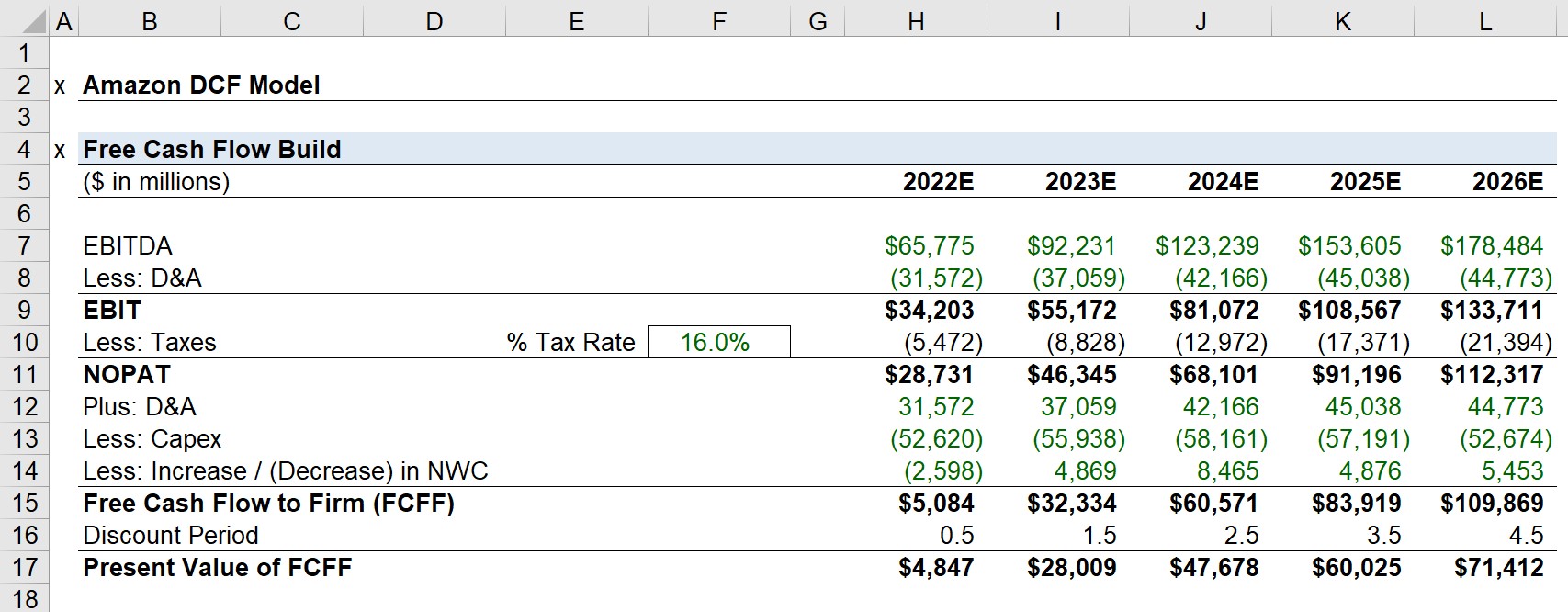Home>Finance>How The Pecking-Order Theory Explain Capital Structure


Finance
How The Pecking-Order Theory Explain Capital Structure
Published: December 25, 2023
Discover how the pecking-order theory explains capital structure in finance and gain insights into the relationship between financial decisions and company value.
(Many of the links in this article redirect to a specific reviewed product. Your purchase of these products through affiliate links helps to generate commission for LiveWell, at no extra cost. Learn more)
Table of Contents
Introduction
When it comes to understanding the financial decisions made by companies, one key concept that often comes into play is capital structure. Capital structure refers to the mix of different sources of funding that a company uses to finance its operations and growth. It is a crucial aspect of corporate finance that directly impacts a company’s risk profile and cost of capital.
One theory that provides insights into the determinants of capital structure is the Pecking-Order Theory. Proposed by Myers and Majluf in 1984, the Pecking-Order Theory suggests that companies prefer to fund their investments and operations in a specific order, based on the availability and cost of financing options.
Under this theory, companies prioritize internal financing, such as retained earnings, over external financing options like debt or equity issuance. Additionally, when external financing is required, companies tend to prefer debt financing over equity financing. The underlying principle behind this preference is that internal financing avoids the issuance costs and potential information asymmetry associated with external financing.
The Pecking-Order Theory is widely recognized and has significant implications for financial decision-making. Understanding its key concepts and the rationale behind it can help investors, creditors, and financial analysts make informed assessments about a company’s financial health and stability.
In this article, we will delve deeper into the Pecking-Order Theory, examine its key elements, explore its implications, and discuss the empirical evidence for its validity. We will also discuss the criticisms and limitations surrounding the theory, highlighting the areas where further research is needed to refine our understanding of capital structure dynamics.
By the end of this article, you will have a comprehensive understanding of the Pecking-Order Theory and its significance in the field of corporate finance. Let’s begin by exploring the concept of capital structure in more detail.
Understanding Capital Structure
Before diving into the intricacies of the Pecking-Order Theory, it’s essential to have a clear understanding of capital structure and its significance in corporate finance.
Capital structure refers to the way a company chooses to finance its assets. It represents the combination of debt and equity used by a company to fund its operations, investments, and growth initiatives.
Components of capital structure include equity (ownership stake in the company) and debt (borrowed funds that companies repay over time). The mix of these components can vary significantly across companies and industries.
Equity financing involves issuing shares of the company to investors in exchange for capital. Investors become partial owners of the company and have a claim on its future profits and assets. Equity financing can come from various sources like initial public offerings (IPOs), private placements, or retained earnings.
Debt financing, on the other hand, involves borrowing funds from external sources like banks, bondholders, or other lending institutions. Companies entering into debt arrangements have contractual obligations to repay the borrowed funds over time, typically with interest.
When analyzing a company’s capital structure, financial analysts and investors look at several key metrics, including the debt-to-equity ratio, leverage ratio, interest coverage ratio, and cost of capital. These ratios provide insights into the overall risk profile, financial health, and ability of a company to meet its debt obligations.
Capital structure decisions are crucial for companies as they have a direct impact on their cost of capital and financial flexibility. By choosing the right mix of debt and equity, companies can optimize their capital structure to minimize financing costs and maximize shareholder value.
Now that we have a clear understanding of capital structure, we can move on to exploring the Pecking-Order Theory and how it sheds light on the financing decisions made by companies.
The Pecking-Order Theory
The Pecking-Order Theory, proposed by Myers and Majluf in 1984, is a theory that explains how companies prioritize different sources of financing. It suggests that companies have a pecking order or hierarchy when it comes to funding their operations and investments.
According to the Pecking-Order Theory, companies prefer internal financing over external financing options. Internal financing refers to the use of retained earnings, which are the profits that a company reinvests back into the business rather than distributing them to shareholders as dividends. The rationale behind this preference is that internal financing does not incur any issuance costs or informational asymmetry that external financing options may entail.
If internal financing is inadequate or insufficient, companies move up the pecking order and turn to debt financing. Debt financing involves borrowing funds from external sources, such as banks or bondholders, with the understanding that the borrowed funds will be repaid over a specific period, often with interest. Debt financing is preferred because it allows companies to maintain control and ownership while leveraging the existing assets and cash flows to secure funding.
Equity financing, the last resort in the pecking order, is the issuance of shares to raise capital. Companies are generally reluctant to issue equity because it dilutes existing shareholders’ ownership and can send negative signals to the market about the company’s financial health.
The Pecking-Order Theory is built on the assumption that information asymmetry exists between company insiders and outside investors. This means that company management has more information about the company’s current and future prospects than external investors do. As a result, companies prefer internal financing because they do not need to disclose as much information as they would with external financing, thus avoiding potential conflicts or adverse selection problems.
By following the pecking order, companies aim to maintain financial stability and minimize financing costs. The theory suggests that financing decisions are driven by the availability of funds rather than by a deliberate attempt to achieve an optimal capital structure. Companies prioritize financing options based on their relative ease and cost, making financing decisions that are practical rather than driven by strategic considerations.
In the next section, we will explore the rationale behind the Pecking-Order Theory in more detail and discuss its implications for companies and investors.
Explanation of the Pecking-Order Theory
The Pecking-Order Theory provides a framework for understanding the financing decisions made by companies. It offers insights into why companies prioritize certain sources of financing over others and how this decision-making process affects their capital structure.
One of the main drivers of the Pecking-Order Theory is the concept of information asymmetry. Companies have superior knowledge about their own financial health, prospects, and future investment opportunities compared to external investors. This information advantage leads to a cautious approach to external financing, as companies fear that the market may misinterpret or undervalue their true worth.
Internal financing, such as retained earnings, is the preferred choice for companies as it does not require disclosure of sensitive information to the general public. By using their internally generated funds, companies can invest in their growth initiatives without the need for external capital and without revealing detailed financial information.
However, the availability of internally generated funds is often limited, and companies may require additional financing to fund their operations or new investment projects. Debt financing becomes the next option in the pecking order. Debt provides companies with a relatively lower cost of capital compared to equity, as it does not dilute ownership or result in sharing profits with external investors.
Moreover, debt financing allows companies to leverage their existing assets and cash flows to secure funding. Lenders often have a priority claim on assets in case of default, making it less risky for them compared to equity investors.
Equity financing is considered the last resort within the pecking order due to its potential dilution effect on existing shareholders. Companies are generally reluctant to issue new shares, as it can send negative signals to the market and lead to a decrease in stock price. However, there are situations where equity financing may be necessary, such as funding large-scale projects or during periods of financial distress when other financing options are limited.
Overall, the Pecking-Order Theory explains that companies prefer internal financing, followed by debt financing, and equity financing as a last resort. The theory aligns with the goal of minimizing transaction costs, maintaining ownership control, and avoiding the adverse effects of information asymmetry.
In the following section, we will discuss the implications of the Pecking-Order Theory and how it influences financing decisions and capital structure in practice.
Implications of the Pecking-Order Theory
The Pecking-Order Theory has several important implications for companies, investors, and financial analysts. Understanding these implications can provide insights into financing decisions and capital structure dynamics.
1. Financing Priorities: The theory suggests that companies prioritize different financing sources based on their availability and cost. Retained earnings are preferred over external financing options, followed by debt and equity. This implies that companies rely more on internal funds and debt financing before considering equity financing.
2. Information Asymmetry: The Pecking-Order Theory underscores the existence of information asymmetry between companies and external investors. Companies have superior knowledge about their financial health and future prospects, which influences their cautious approach to external financing. This highlights the importance of transparency and effective communication between companies and stakeholders.
3. Financing Costs: The theory implies that internal financing is preferred because it does not involve transaction costs or the need to disclose sensitive information. Debt financing is seen as a more cost-effective option than equity financing due to its lower cost of capital. The theory suggests that higher information asymmetry and greater uncertainty can result in higher financing costs.
4. Capital Structure Dynamics: The Pecking-Order Theory suggests that capital structure is determined by the order of financing preferences. As companies prioritize internal financing and debt over equity, their capital structure is likely to be skewed towards debt. This can have implications for the risk profile, solvency, and financial stability of the company.
5. Financial Performance: The theory suggests a correlation between financing decisions and financial performance. Companies that rely heavily on internal funds may indicate strong profitability and cash generation. On the other hand, companies resorting to external financing options may indicate a need for growth or face financial challenges.
6. Investment Opportunities: The Pecking-Order Theory implies that financing decisions are influenced by the availability and attractiveness of investment opportunities. If companies perceive lucrative investment prospects, they are more likely to use external financing to pursue growth. Conversely, limited investment opportunities may result in higher retained earnings and a lower need for external funding.
Overall, the Pecking-Order Theory provides valuable insights into how companies make financing decisions and manage their capital structure. It highlights the significance of information asymmetry, the cost of financing, and the impact of different funding sources on the company’s financial health and performance.
In the next section, we will examine the empirical evidence and research findings that support or challenge the Pecking-Order Theory.
Empirical Evidence on the Pecking-Order Theory
Over the years, empirical research has been conducted to assess the validity of the Pecking-Order Theory and its implications for capital structure decisions. While the theory provides a logical framework, empirical studies have provided mixed results.
Some studies have found support for the Pecking-Order Theory’s predictions. Research has shown that companies prioritize internal financing over external financing options, primarily driven by the desire to avoid transaction costs and information asymmetry. These studies have observed a negative relationship between financing deficits and internal financing, as well as a positive relationship between internal financing and firm profitability.
Additionally, studies have shown that companies with greater information asymmetry tend to rely more on debt financing than equity financing. This suggests that companies use debt as a signaling mechanism to reassure external investors of their financial strength and mitigates informational asymmetry concerns.
However, other studies have challenged the Pecking-Order Theory and provided mixed results. Some research has found that companies do not strictly adhere to the pecking order outlined in the theory. Instead, they consider multiple factors, including tax benefits, agency costs, and market conditions when making financing decisions.
Moreover, some studies have highlighted the influence of factors such as firm size, industry characteristics, growth opportunities, and macroeconomic conditions on capital structure choices. These findings suggest that the Pecking-Order Theory may not fully capture the complexity of real-world financing decisions.
Overall, while there is support for certain aspects of the Pecking-Order Theory, it is important to consider the limitations and context-specific factors that influence capital structure decisions. The empirical evidence suggests that the theory provides a useful framework, but it is not a definitive explanation for all situations.
Further research is needed to reconcile the mixed findings and better understand the interplay between internal financing, debt financing, and equity financing in different economic contexts.
In the next section, we will discuss the criticisms and limitations surrounding the Pecking-Order Theory, highlighting the areas where additional research is required.
Criticisms and Limitations of the Pecking-Order Theory
While the Pecking-Order Theory offers valuable insights into financing decisions and capital structure, it is not without its critics. Several criticisms and limitations surround the theory, highlighting the need for further research and refinement.
1. Strategic Considerations: The theory assumes that companies prioritize financing based solely on availability and cost. However, companies may also consider strategic factors, such as the alignment of financing choices with long-term goals and growth opportunities. The theory does not adequately address these strategic considerations in financing decisions.
2. Market Timing: The theory does not account for the impact of market conditions on financing decisions. In practice, companies may opportunistically time their debt or equity issuances based on market conditions, taking advantage of favorable interest rates or investor sentiment. The Pecking-Order Theory does not capture these market-timing dynamics.
3. Agency Costs: The theory does not explicitly consider the impact of agency costs on financing decisions. Agency costs, including monitoring costs and conflicts of interest between managers and shareholders, can influence financing choices. Companies may use debt financing to align manager-shareholder interests or signal their commitment to efficient operations.
4. Non-Linear Relationship: The Pecking-Order Theory assumes a linear relationship between financing deficits and external financing needs. However, studies have shown that the relationship may not always be linear. Small deficits may be funded internally, moderate deficits through debt, and only large deficits through equity issuance. This non-linear relationship is not fully captured by the theory.
5. Firm-Specific Factors: The theory does not account for the impact of firm-specific factors, such as industry characteristics, growth opportunities, or financial constraints. These factors can influence a company’s financing decisions and its ability to access different funding sources. The theory’s generalizability across different industries and firm-specific contexts is limited.
6. Explaining Capital Structure Paradoxes: The theory struggles to explain empirical observations, such as the presence of high leverage in profitable and growth-oriented companies. It fails to account for companies voluntarily maintaining higher debt levels to take advantage of tax shields or to signal their future prospects. These capital structure paradoxes challenge the theory’s explanatory power.
Despite these criticisms, the Pecking-Order Theory remains a valuable framework for understanding financing decisions. However, it must be interpreted in conjunction with other theories and considering firm-specific factors and market dynamics.
In the following section, we will conclude the article by summarizing the key points discussed and highlighting the significance of the Pecking-Order Theory in financial decision-making.
Conclusion
The Pecking-Order Theory provides valuable insights into the financing decisions and capital structure dynamics of companies. It suggests that companies prioritize internal financing, followed by debt financing, and view equity financing as a last resort. The theory is based on the idea of information asymmetry and the desire to avoid transaction costs and adverse selection problems associated with external financing.
While empirical evidence has provided mixed results, the theory has significant implications for financial decision-making. It highlights the importance of understanding the rational behind financing choices, the impact of information asymmetry, and the influence of market conditions on capital structure decisions.
However, the Pecking-Order Theory is not without its limitations. It does not fully capture strategic considerations, market timing, agency costs, and firm-specific factors that influence financing decisions. Further research is needed to refine the theory and account for these factors.
In practice, companies must carefully consider their financing options, taking into account their financial position, growth opportunities, market conditions, and long-term goals. Investors and financial analysts can use the Pecking-Order Theory as a framework to evaluate a company’s financial health, risk profile, and financing decisions.
Understanding the Pecking-Order Theory allows stakeholders to make informed assessments about a company’s capital structure and its implications for financial performance and stability. It underscores the importance of financial transparency, effective communication, and alignment of financing choices with strategic objectives.
In conclusion, while the Pecking-Order Theory provides a valuable perspective on capital structure dynamics, it is crucial to consider it in conjunction with other theories and account for firm-specific factors. By doing so, stakeholders can gain a comprehensive understanding of financing decisions and their impact on a company’s overall financial well-being.














